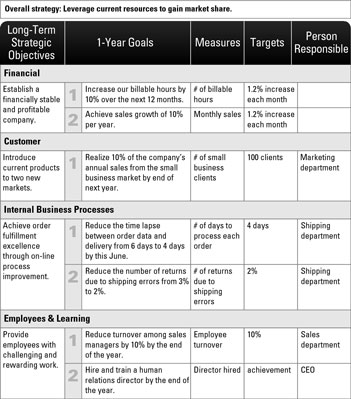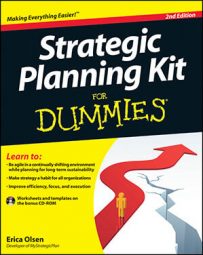This area is probably the most widely debated part of strategic planning. Having goals, objectives, and strategies are great, but knowing how they all work together (if in fact they do) and if you need them all is another story. Ignore the semantics and focus on establishing a time frame. What matters is having a combination of long-term and short-term markers to keep your organization moving in the right direction.
Think of the following hierarchy to demystify the terms of your priorities:
Core values: Your guiding principles that rarely change and that you stick to no matter what vision you’re pursuing
Mission: The underlying purpose why you’re in business in the first place
Vision: The big, hairy, bold goal you’re headed for, and the concept that everything your company does is focused on
Strategy: The guiding statement that explains how you get to your vision
Three-year strategic objectives: Intermediate goals that are broad and continuous, that you achieve on the way to your vision, and that explain the activities you need to be in to achieve your vision
One-year SMART goals: One-year markers that support your long-term strategic objectives
Action items: Items that explain the who and the when
The figure illustrates how to use the four balanced scorecard perspectives as well as how strategies, goals, and objectives fit together.


